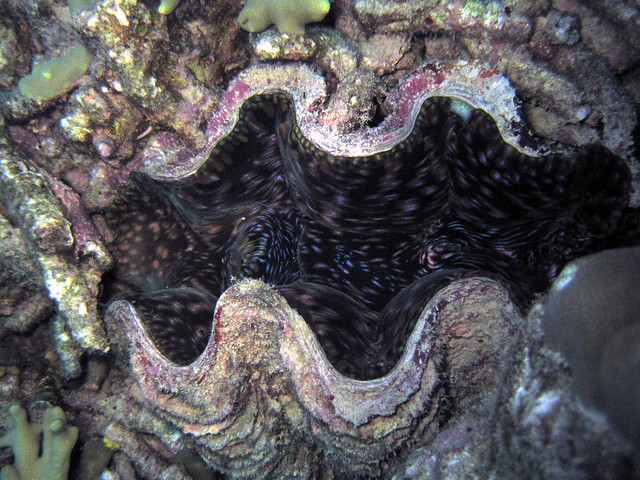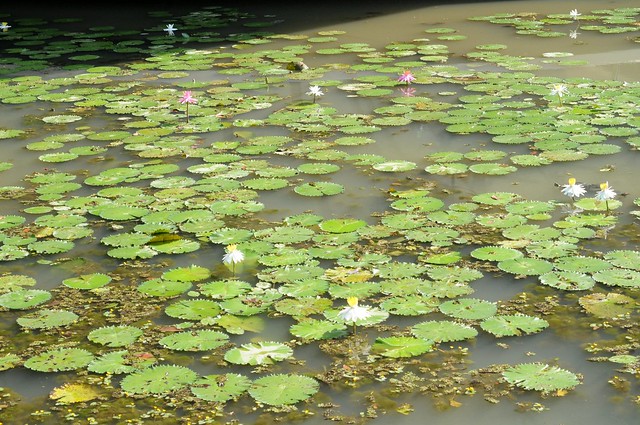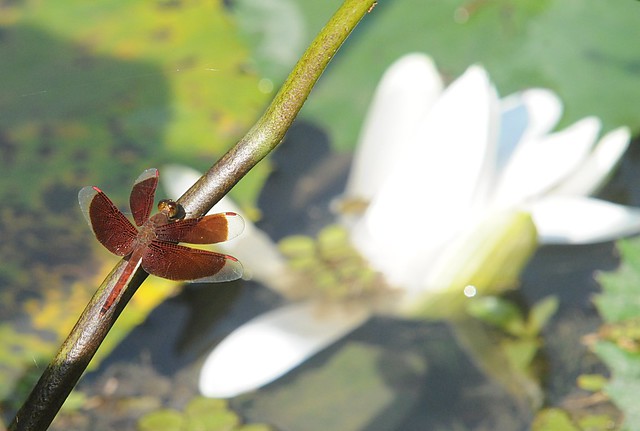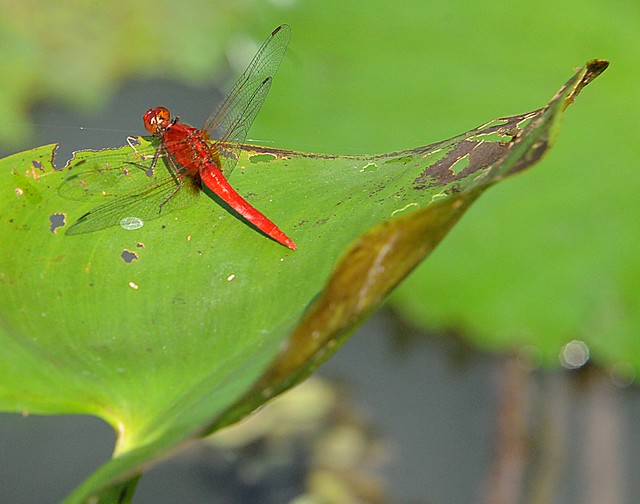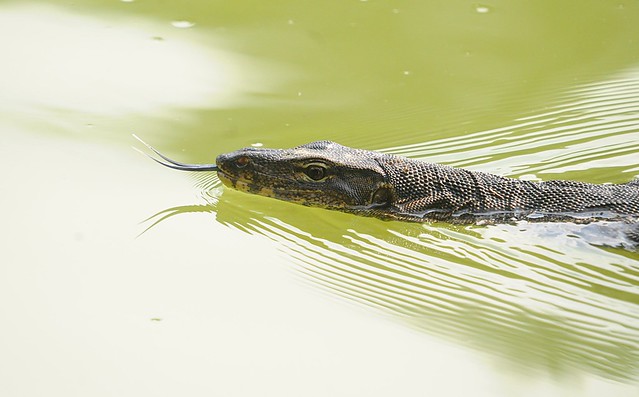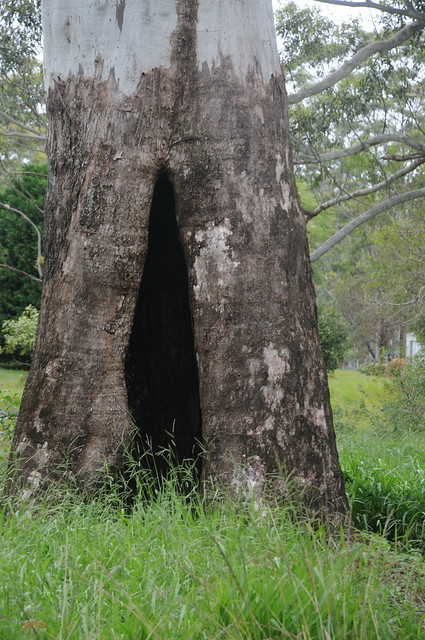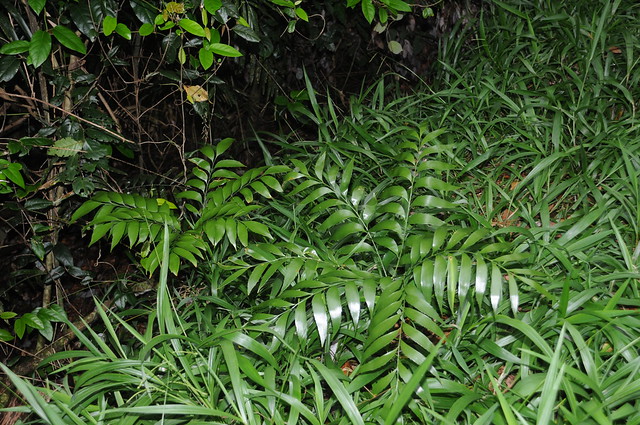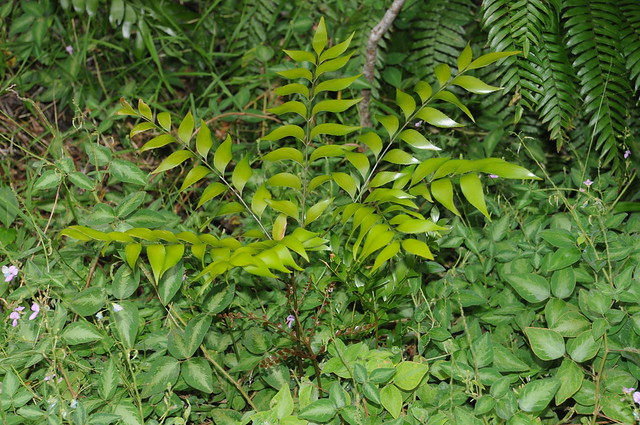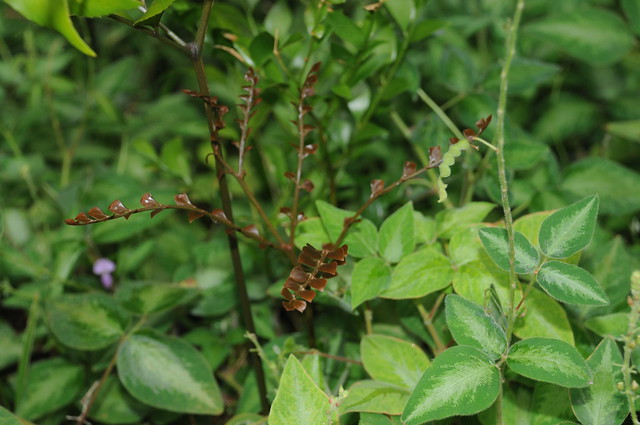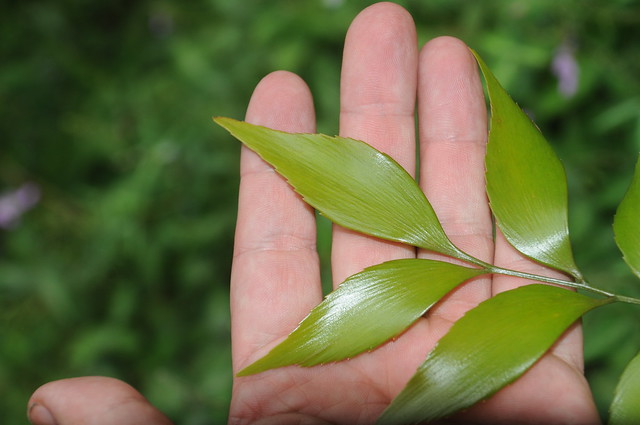So, as we have previously discussed the forests of Queensland's Wet Tropics are ancient primeval places - home to an abundance of primitive plant flora, giant crocodiles, non-placental and monotrene mammals, giant snakes and huge bipedal birds. As such it's only fitting that they house a number of species of cycad. Naturally since I was in the region I was keen to have a look for some of them and these posts will describe my quest for one in particular.
But first up some necessary background. The genus Bowenia is in the Stangeriacea family of cycads and contains 2 recognised species. These are:
1)
Bowenia serrulata - the Byfield "fern", a leaflet of which is below from a speciman at Fairchild Tropical Gardens -
(note the specific name "
serrulata" which references the serrated edges to the leaflets clearly visible above - this is important); and
2)
Bowenia spectabilis - a seedling of which is seen below, a specimen on my windowsill -
(note the beautifully smooth edges to the leaflets contrasting with
serrulata).
There is however a third form of Bowenia commonly known as Bowenia "Tinaroo". It's called that because it's populations are only found in the surrounds of Lake Tinaroo in the Atherton Tablelands which is helpful because when I found myself on holiday near Lake Tinaroo I knew I was in roughly the right place.
Bowenia "Tinaroo" is characterised by a few populations far away from the range of, and different to, Bowenia serrulata but which are in the range of Bowenia spectabilis and yet have serrated leaf edges. In other words it looks like one but grows where the other should be and doesn't quite fit either. So what is it and could I find it? Well, with the help of some web-based research, I managed to find someone with information on where a population might be found and decided to try and find it. I'm not going to share any further detail of where I went to protect the plants from collectors but it wasn't particularly near Lake Tinaroo.
Anway the detail I had was that it was to be found part way along a road from [point x] to [point y]. I had a slightly average lunch some 20km from [point x] and set off, driving along what turned out to be a particularly windy, narrow, poorly surfaced road. As I drove I mulled over the following facts:
- it turned out the distance from [point x] to [point y] was rather further than I'd thought (in the tens of kilometres);
- Bowenia are small and green and look a little bit like ferns and the saplings of some forest trees; and
- my ability to find said plants was therefore somewhat doubtful.
As I pondered the possibility of this being a fool's errand I noticed something on the verge ahead. Pulling off the road safely and jumping out of the car confirmed my suspicions that I had indeed just spotted a beautiful, big healthy
Bowenia.....
There was just one problem, see if you can spot what it was....
No serrations whatsoever. Whilst you're pondering that this plant was only a few km from my target location I'll leave you with this habitat shot of what
Bowenia spectabilis habitat looks like:
Tomorrow we'll continue the quest for the Tinaroo cycad and I'll talk about what it actually is.

